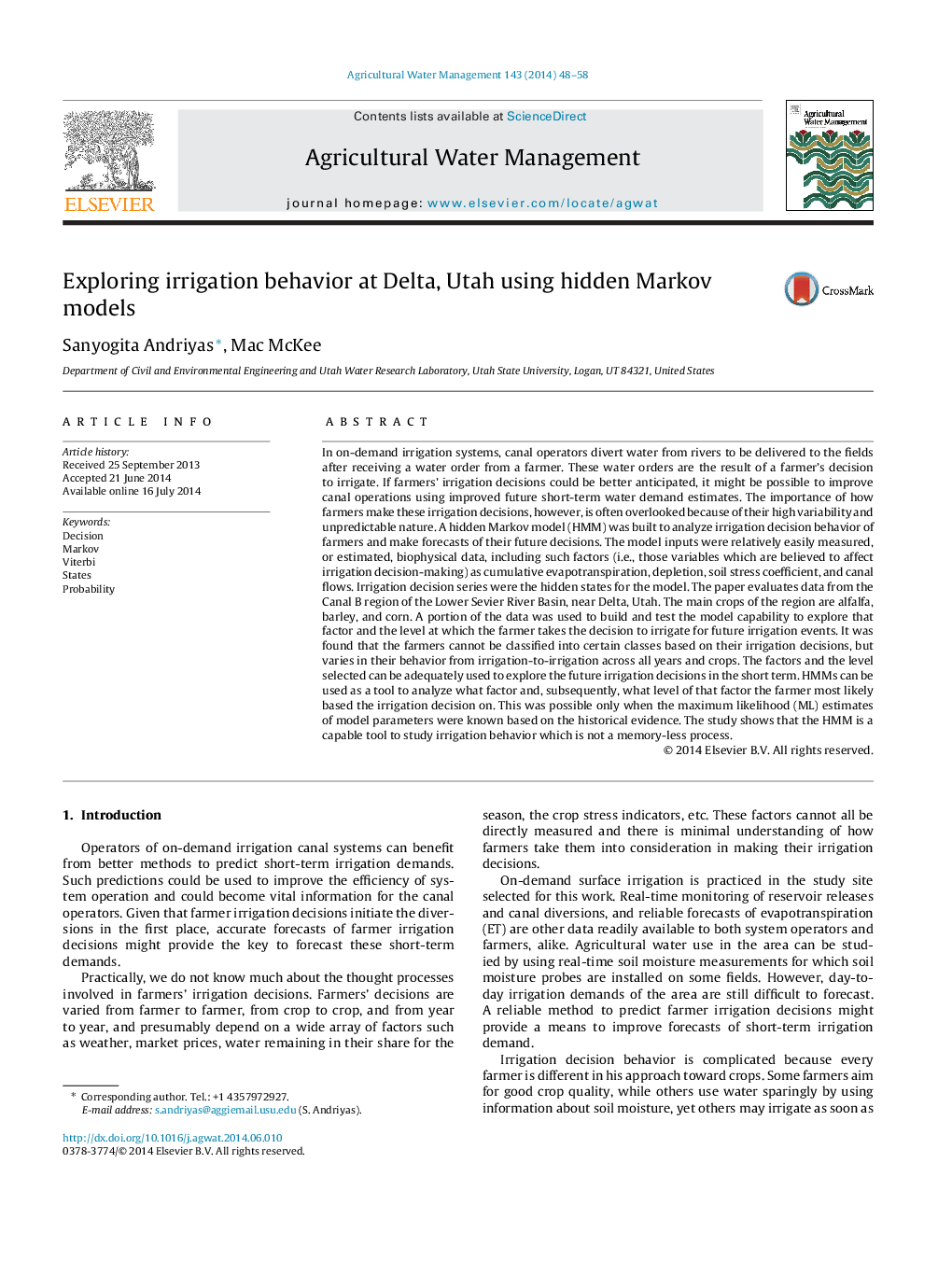| کد مقاله | کد نشریه | سال انتشار | مقاله انگلیسی | نسخه تمام متن |
|---|---|---|---|---|
| 4478629 | 1622936 | 2014 | 11 صفحه PDF | دانلود رایگان |
• Canal operators need reliable information to forecast short-term irrigation demands.
• The biophysical conditions on the day of irrigation and before that can be used to forecast irrigation decisions.
• Various possible factors for irrigation decision were analyzed.
• We model farmer's irrigation decisions and use them to forecast future actions.
• Hidden Markov models can be used as a potential tool to forecast irrigation decisions.
In on-demand irrigation systems, canal operators divert water from rivers to be delivered to the fields after receiving a water order from a farmer. These water orders are the result of a farmer's decision to irrigate. If farmers’ irrigation decisions could be better anticipated, it might be possible to improve canal operations using improved future short-term water demand estimates. The importance of how farmers make these irrigation decisions, however, is often overlooked because of their high variability and unpredictable nature. A hidden Markov model (HMM) was built to analyze irrigation decision behavior of farmers and make forecasts of their future decisions. The model inputs were relatively easily measured, or estimated, biophysical data, including such factors (i.e., those variables which are believed to affect irrigation decision-making) as cumulative evapotranspiration, depletion, soil stress coefficient, and canal flows. Irrigation decision series were the hidden states for the model. The paper evaluates data from the Canal B region of the Lower Sevier River Basin, near Delta, Utah. The main crops of the region are alfalfa, barley, and corn. A portion of the data was used to build and test the model capability to explore that factor and the level at which the farmer takes the decision to irrigate for future irrigation events. It was found that the farmers cannot be classified into certain classes based on their irrigation decisions, but varies in their behavior from irrigation-to-irrigation across all years and crops. The factors and the level selected can be adequately used to explore the future irrigation decisions in the short term. HMMs can be used as a tool to analyze what factor and, subsequently, what level of that factor the farmer most likely based the irrigation decision on. This was possible only when the maximum likelihood (ML) estimates of model parameters were known based on the historical evidence. The study shows that the HMM is a capable tool to study irrigation behavior which is not a memory-less process.
Journal: Agricultural Water Management - Volume 143, September 2014, Pages 48–58
